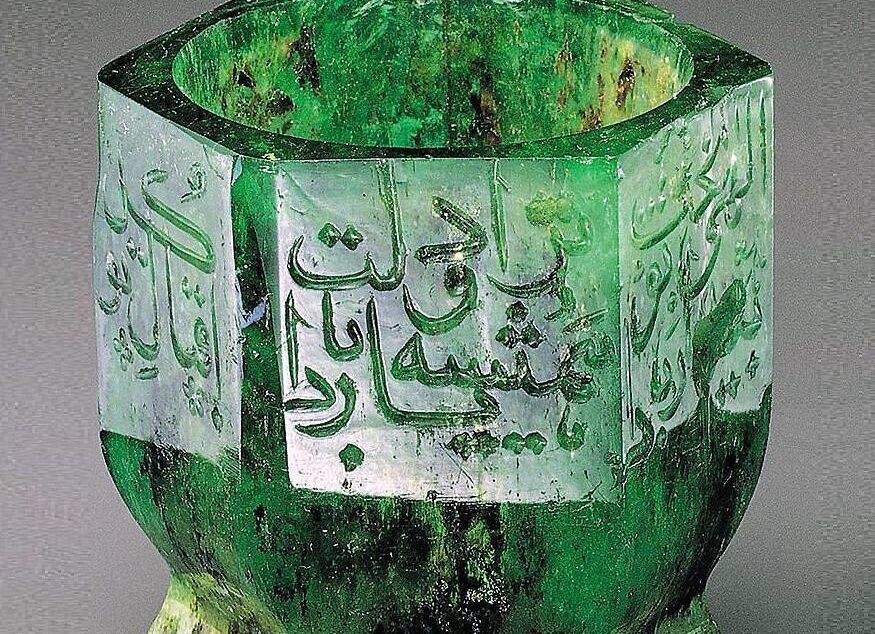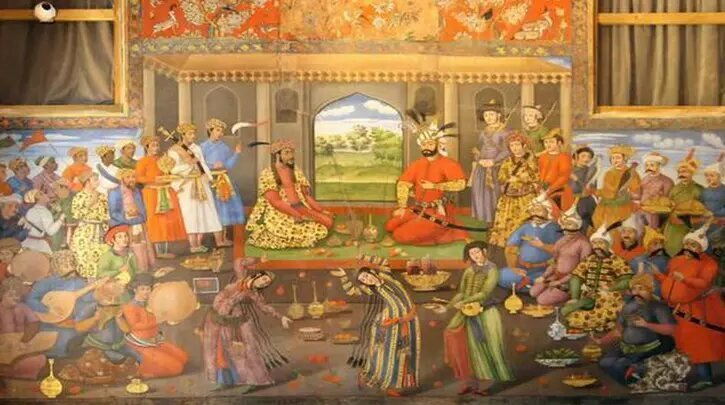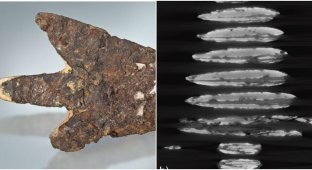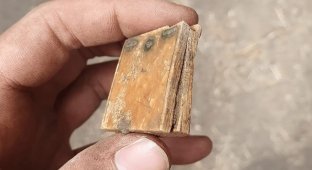An ancient glass designed to detect poison was found in India (5 photos)
Indian archaeologists have made an unusual discovery that sheds light on the ingenious measures taken by Mughal-era emperors to prevent assassination attempts on their rulers. 
During excavations in Burhanpur, Madhya Pradesh (India), researchers discovered an interesting artifact dating back more than four centuries ago. 
Inside the metal structure of the glass is a glass component that can detect poison. If someone tries to poison the water by adding an insecticide or some other poison, the glass at the bottom will change color.
The found relic turned out to be a glass, which is intended for nothing more than to detect poison in drinks poured into it. This is a testament to the cunning strategies that the rulers of that era used to protect themselves from the conspiracies that were prevalent at the time.
Mechanism for detecting poison in a glass
Dr Subhash Mane, India's renowned antiquities collector and respected archaeologist, revealed the significance of this find. According to a News 18 report, this special glass, made of glass and metal known as Casa, has unusual properties.
“If someone tries to poison the water by adding an insecticide or some other poison, the glass at the bottom will change color,” Dr. Manet explained. This ingenious mechanism served as a silent sentinel, warning rulers of potential poisoning threats from their confidants.
According to the researcher, when poison or pesticides are added to the water in this glass, when you look through the glass at the light, a green or red color begins to appear. This served as a clear warning sign for whoever was about to drink from this glass.
Apart from its actual purpose, this artifact is a masterpiece of Mughal art. Decorated with exquisite engravings of the Taj Mahal's famous builder, Shahjahan, and his beloved wife Mumtaz, the glass is an example of the exquisite craftsmanship of its time. 
Shahjahan. Engraving from the Mughal era. Photo: Victoria and Albert Museum
The glass is about 15 inches high and can hold half a liter of water. It serves as both a cunning tool for uncovering conspiracies and a symbol of the rich cultural heritage of the Mughal era.
That is why it has been added to the collection of Dr. Subhash Mane, who has been involved in archeology for over four decades and has made it his mission to educate future generations about these priceless relics.
Poisoned food changed Mughal eating habits
In general, it can be noted that the found artifact once again emphasized how specific the Mughal dynasty’s relationship with food and drink was. The whole point is that countless betrayals and conspiracies played a role here, when poisoned food or drinks were used.
Researchers believe that from the moment when the famous Emperor Babur survived an assassination attempt by Lodi's mother, Dilawar Begum, despite his kindness towards her family, the Mughals developed a deep-seated fear of poison. 
Emerald bowl, late 16th–17th centuries, Mughal, India, height 4.1 cm, 252 carats (Al-Sabah Collection, Kuwait).
This fear persisted from generation to generation, leading to the emergence of a whole “culture” of suspicion and caution in relation to every meal. Although Mughal cuisine flourished during Akbar's reign, incorporating Central Asian cooking techniques and the use of Indian spices, the specter of poisoning haunted the empire. Alcoholism and opium abuse were rampant among the nobility, and deadly competition for the throne forced family members to resort to poisoning of rivals. 
Feasts of the Mughal era were not complete without countless dishes.
As the Mughal Empire became richer and more powerful, power was fought over more and more fiercely. The stakes grew higher, and the threat of poison became a constant problem for the ruling elite.
Many examples can be cited here - from the struggle of ruler Jahangir with alcoholism to the ruthless use of poison by Aurangzeb to destroyand rivals such as Suleiman Mirza.
Literally every bite of food and every sip of drink carried the fear of betrayal and murder.
The glass found by archaeologists is only a small fraction of the historical evidence of the paranoia that developed at the Mughal court around dinners. Ultimately, the fear of poison was indeed so deeply ingrained in Mughal culture that it shaped their attitudes to food and drink for centuries to come.





























